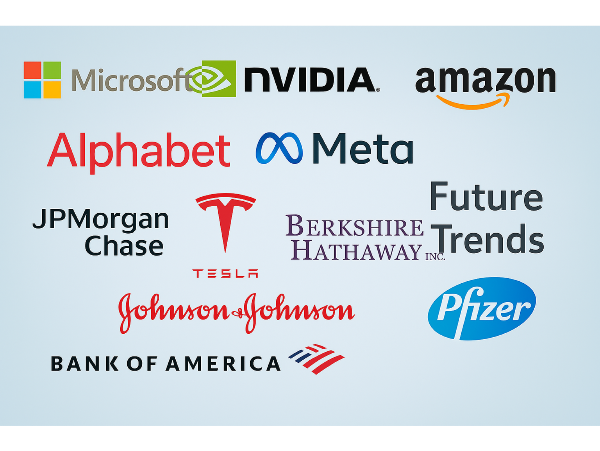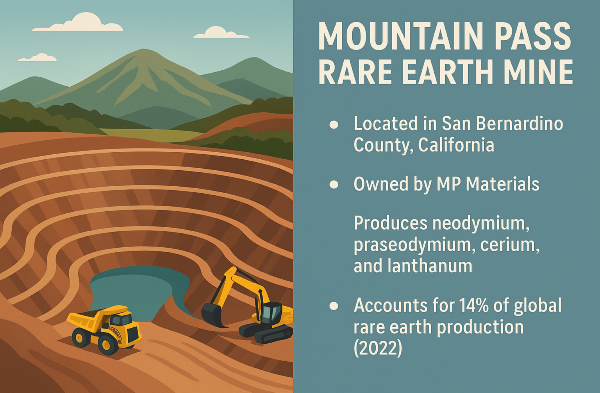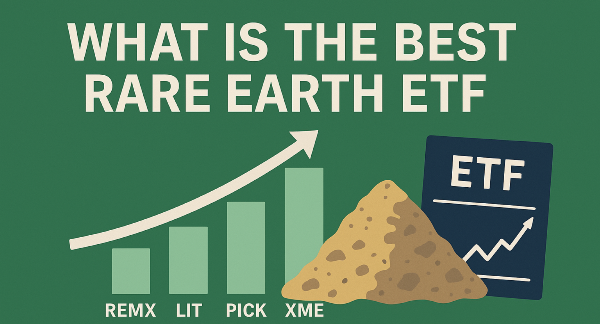Introduction
Mega-cap stocks represent the largest publicly traded companies, typically exceeding $200 billion in market capitalization. These corporations wield significant influence over global markets due to their financial strength, industry dominance, and extensive resources. Market capitalization, calculated by multiplying a company's share price by its total outstanding shares, serves as a key metric for classifying stocks into different categories, including small-cap, mid-cap, large-cap, and mega-cap. Investors rely on these classifications to assess risk levels, growth potential, and stability, making mega-cap stocks a preferred choice for long-term investment strategies. Their presence in major indices further reinforces their importance in shaping economic trends and investor sentiment.
Market Capitalization Thresholds for Mega-Cap Stocks
Mega-cap stocks are defined as companies with a market capitalization exceeding $200 billion, placing them among the largest publicly traded firms. These companies, such as Apple [APPL], Microsoft [MSFT], and Amazon [AMZN], dominate their industries and significantly influence global markets. Their size and financial strength provide stability, making them attractive to investors seeking lower volatility and consistent returns. The exact threshold for mega-cap classification can fluctuate based on market conditions.
In comparison, large-cap stocks range between $10 billion and $200 billion in market capitalization. Companies like Starbucks [SBUX] and Pfizer [PFE] fall within this category, offering stability but with slightly higher volatility than mega-cap stocks. Mid-cap stocks are valued between $2 billion and $10 billion, while small-cap stocks are typically under $2 billion. Mega-cap stocks play a crucial role in shaping major stock indices such as the S&P 500 and Nasdaq-100. Their performance can significantly impact broader market trends, as their sheer size allows them to drive index movements.
Sources
Investopedia
Stock Analysis
FinanceBand
Characteristics of Mega-Cap Stocks
Mega-cap stocks are known for their financial stability and significant global market influence. These companies, such as Apple [APPL], Microsoft [MSFT], and Amazon [AMZN], maintain strong balance sheets, consistent revenue streams, and diversified business models. Their ability to generate substantial cash flow allows them to weather economic downturns and sustain long-term growth. Investors often favor mega-cap stocks for their lower volatility and predictable returns, making them a cornerstone of many portfolios.
Companies like Nvidia [NVDA] and Alphabet [GOOGL] drive advancements in technology, shaping the future of artificial intelligence and digital infrastructure. Meanwhile, firms such as Johnson & Johnson [JNJ] and Pfizer [PFE] play a crucial role in healthcare, influencing medical research and pharmaceutical development. Their extensive market reach and competitive positioning allow them to maintain leadership, ensuring sustained profitability and investor confidence.
Companies investing in emerging technologies, sustainability, and global expansion are expected to outperform traditional industries. Tesla [TSLA] and NextEra Energy [NEE] exemplify this trend, focusing on renewable energy and electric vehicles to drive future growth. Investors seeking stability and consistent returns often prioritize mega-cap stocks.
Sources
Nasdaq
Investopedia
Stock Analysis
How Mega-Cap Stocks Impact the Market
Mega-cap stocks play a crucial role in shaping major stock indices such as the S&P 500 and Nasdaq-100. Their substantial market capitalization gives them significant weight in these indices, meaning their performance can influence broader market trends. Companies like Apple [AAPL], Microsoft [MSFT], and Amazon [AMZN] often drive index movements due to their size and financial strength. When these stocks experience gains or losses, they can impact the overall direction of the market, affecting investor sentiment and economic forecasts. Their stability and consistent revenue streams make them key indicators of market health, guiding investment strategies for both institutional and retail investors.
Investor sentiment is heavily influenced by the performance of mega-cap stocks, as they often serve as benchmarks for economic stability. When companies like Nvidia [NVDA] and Alphabet [GOOGL] report strong earnings, confidence in the market tends to rise, leading to increased investment activity. Conversely, downturns in mega-cap stocks can trigger broader market corrections, affecting smaller stocks and sector-specific investments. Their ability to shape economic trends underscores their importance in portfolio management, as investors look to these stocks for signals on market direction and financial stability.
Sources
Accounting Insights
SuperMoney
Investopedia
Are Mega-Cap Stocks the Best Long-Term Investment?
Mega-cap stocks are widely regarded as strong long-term investments due to their financial stability, market influence, and consistent returns. These companies, such as Apple [AAPL], Microsoft [MSFT], and Amazon [AMZN], have substantial cash reserves and diversified revenue streams, making them resilient during economic downturns. Compared to large-cap stocks, which range between $10 billion and $200 billion in market capitalization, mega-cap stocks offer lower volatility and predictable growth. While mid-cap and small-cap stocks may provide higher short-term gains, they also carry greater risk. Investors seeking security and steady appreciation often favor mega-cap stocks for their ability to withstand market fluctuations.
Historically, mega-cap stocks have demonstrated strong performance, particularly in sectors like technology, healthcare, and finance. Companies such as Nvidia [NVDA] and Alphabet [GOOGL] have consistently driven innovation, contributing to sustained growth. Their inclusion in major indices like the S&P 500 and Nasdaq-100 further reinforces their reliability. Investment strategies for maximizing returns in mega-cap stocks include portfolio diversification, ETF investments, and evaluating financial metrics such as price-to-earnings ratios and dividend yields. Investors looking for long-term wealth preservation often prioritize mega-cap stocks due to their ability to generate stable returns while maintaining industry leadership.
Sources
Nasdaq
MarketBeat
The Motley Fool
Examples of Leading Mega-Cap Stocks
These corporations dominate their industries and significantly influence global markets. Companies such as Microsoft [MSFT], Nvidia [NVDA], and Apple [AAPL] lead the technology sector, driving innovation in artificial intelligence, cloud computing, and consumer electronics. Their financial strength and extensive market reach make them attractive to investors seeking stability and long-term growth. Other notable mega-cap stocks include Amazon [AMZN] and Alphabet [GOOGL], which continue to shape e-commerce and digital advertising landscapes.
Companies like Meta Platforms [META] and Tesla [TSLA] have transformed social media and electric vehicle industries, respectively, maintaining strong revenue streams and expanding their global presence. Meanwhile, Berkshire Hathaway [BRK.B] and JPMorgan Chase [JPM] dominate the financial sector, providing stability and consistent returns for investors. As industries evolve, companies like Broadcom [AVGO] and Taiwan Semiconductor Manufacturing Company [TSM] continue to lead semiconductor innovation, ensuring sustained market relevance.
Sources
Stock Analysis
Bankrate
Wall Street Numbers
Investment Strategies for Mega-Cap Stocks
Investors can approach mega-cap stocks through direct investments or diversified funds such as ETFs and mutual funds. Direct investments allow shareholders to own individual stocks like Apple [AAPL] and Microsoft [MSFT], providing control over portfolio allocation and potential dividend income. ETFs and mutual funds, such as the Vanguard Mega Cap ETF [MGC] and the SPDR S&P 500 ETF Trust [SPY], offer exposure to a broad range of mega-cap companies, reducing individual stock risk while maintaining stability.
Portfolio diversification is essential when investing in mega-cap stocks to balance risk and return. Companies like Nvidia [NVDA] and Johnson & Johnson [JNJ] provide exposure to high-growth industries while maintaining financial stability. Geographic diversification also plays a role, as international mega-cap stocks can enhance portfolio performance. Investors analyze indicators such as price-to-earnings ratios, earnings growth, and dividend yields to assess a company's financial health. Companies with strong balance sheets and consistent revenue streams, such as Alphabet [GOOGL] and Berkshire Hathaway [BRK.B], are often preferred for long-term stability.
Sources
Charles Schwab
FasterCapital
Morningstar
Future Trends in Mega-Cap Stocks
Mega-cap stocks are expected to continue shaping the future of technology, healthcare, and finance through innovation and market expansion. Companies like Alphabet [GOOGL] and Meta Platforms [META] are investing heavily in artificial intelligence, enhancing digital advertising and enterprise solutions. Meanwhile, Nvidia [NVDA] is driving advancements in AI-powered computing, reinforcing its leadership in semiconductor technology. In healthcare, firms such as Johnson & Johnson [JNJ] and Pfizer [PFE] are focusing on biotechnology and personalized medicine, ensuring long-term growth.
The financial sector is also evolving, with JPMorgan Chase [JPM] and Bank of America [BAC] leveraging fintech solutions to improve efficiency and customer engagement. Companies like Amazon [AMZN] and Microsoft [MSFT] are leading the charge in cloud infrastructure, ensuring sustained revenue growth. Healthcare innovation, including advancements in gene therapy and medical AI, will drive long-term performance for industry leaders. Additionally, financial institutions are expected to capitalize on digital banking and blockchain technology, reinforcing their market positions.
Sources
InvestorPlace
American Century
Morningstar
Conclusion
Mega-cap stocks represent the largest and most influential companies in global markets, offering financial stability, industry leadership, and long-term growth potential. Their dominance in sectors such as technology, healthcare, and finance reinforces their significance in investment strategies. While they provide lower volatility compared to smaller stocks, they continue to evolve through innovation and market expansion. Understanding their impact, risk factors, and investment strategies helps investors make informed decisions. As trends shift toward artificial intelligence, biotechnology, and digital finance, mega-cap stocks remain essential for portfolio diversification and sustained returns in an ever-changing economic landscape.
📌Read More About:
The Top Large Cap Stocks- https://stockbossup.com/pages/topics/large-cap
How Many Mega-Cap Stocks Are There?- https://stockbossup.com/pages/post/38741/how-many-mega-cap-stocks-are-there
Is Walmart a Mega Cap?- https://www.stockbossup.com/pages/post/38594/is-walmart-a-mega-cap-stock
Is Amazon a Mega-Cap?- https://stockbossup.com/pages/post/38610/is-amazon-a-mega-cap
Is Netflix a Mega-Cap?- https://stockbossup.com/pages/post/38611/is-netflix-a-mega-cap
Is Microsoft a mega cap stock- https://www.stockbossup.com/pages/post/38593/is-microsoft-a-mega-cap-stock




























Introduction
Mega-cap stocks represent the largest publicly traded companies, typically exceeding $200 billion in market capitalization. These corporations wield significant influence over global markets due to their financial strength, industry dominance, and extensive resources. Market capitalization, calculated by multiplying a company's share price by its total outstanding shares, serves as a key metric for classifying stocks into different categories, including small-cap, mid-cap, large-cap, and mega-cap. Investors rely on these classifications to assess risk levels, growth potential, and stability, making mega-cap stocks a preferred choice for long-term investment strategies. Their presence in major indices further reinforces their importance in shaping economic trends and investor sentiment.
Market Capitalization Thresholds for Mega-Cap Stocks
Mega-cap stocks are defined as companies with a market capitalization exceeding $200 billion, placing them among the largest publicly traded firms. These companies, such as Apple [APPL], Microsoft [MSFT], and Amazon [AMZN], dominate their industries and significantly influence global markets. Their size and financial strength provide stability, making them attractive to investors seeking lower volatility and consistent returns. The exact threshold for mega-cap classification can fluctuate based on market conditions.
In comparison, large-cap stocks range between $10 billion and $200 billion in market capitalization. Companies like Starbucks [SBUX] and Pfizer [PFE] fall within this category, offering stability but with slightly higher volatility than mega-cap stocks. Mid-cap stocks are valued between $2 billion and $10 billion, while small-cap stocks are typically under $2 billion. Mega-cap stocks play a crucial role in shaping major stock indices such as the S&P 500 and Nasdaq-100. Their performance can significantly impact broader market trends, as their sheer size allows them to drive index movements.
Sources
Investopedia
Stock Analysis
FinanceBand
Characteristics of Mega-Cap Stocks
Mega-cap stocks are known for their financial stability and significant global market influence. These companies, such as Apple [APPL], Microsoft [MSFT], and Amazon [AMZN], maintain strong balance sheets, consistent revenue streams, and diversified business models. Their ability to generate substantial cash flow allows them to weather economic downturns and sustain long-term growth. Investors often favor mega-cap stocks for their lower volatility and predictable returns, making them a cornerstone of many portfolios.
Companies like Nvidia [NVDA] and Alphabet [GOOGL] drive advancements in technology, shaping the future of artificial intelligence and digital infrastructure. Meanwhile, firms such as Johnson & Johnson [JNJ] and Pfizer [PFE] play a crucial role in healthcare, influencing medical research and pharmaceutical development. Their extensive market reach and competitive positioning allow them to maintain leadership, ensuring sustained profitability and investor confidence.
Companies investing in emerging technologies, sustainability, and global expansion are expected to outperform traditional industries. Tesla [TSLA] and NextEra Energy [NEE] exemplify this trend, focusing on renewable energy and electric vehicles to drive future growth. Investors seeking stability and consistent returns often prioritize mega-cap stocks.
Sources
Nasdaq
Investopedia
Stock Analysis
How Mega-Cap Stocks Impact the Market
Mega-cap stocks play a crucial role in shaping major stock indices such as the S&P 500 and Nasdaq-100. Their substantial market capitalization gives them significant weight in these indices, meaning their performance can influence broader market trends. Companies like Apple [AAPL], Microsoft [MSFT], and Amazon [AMZN] often drive index movements due to their size and financial strength. When these stocks experience gains or losses, they can impact the overall direction of the market, affecting investor sentiment and economic forecasts. Their stability and consistent revenue streams make them key indicators of market health, guiding investment strategies for both institutional and retail investors.
Investor sentiment is heavily influenced by the performance of mega-cap stocks, as they often serve as benchmarks for economic stability. When companies like Nvidia [NVDA] and Alphabet [GOOGL] report strong earnings, confidence in the market tends to rise, leading to increased investment activity. Conversely, downturns in mega-cap stocks can trigger broader market corrections, affecting smaller stocks and sector-specific investments. Their ability to shape economic trends underscores their importance in portfolio management, as investors look to these stocks for signals on market direction and financial stability.
Sources
Accounting Insights
SuperMoney
Investopedia
Are Mega-Cap Stocks the Best Long-Term Investment?
Mega-cap stocks are widely regarded as strong long-term investments due to their financial stability, market influence, and consistent returns. These companies, such as Apple [AAPL], Microsoft [MSFT], and Amazon [AMZN], have substantial cash reserves and diversified revenue streams, making them resilient during economic downturns. Compared to large-cap stocks, which range between $10 billion and $200 billion in market capitalization, mega-cap stocks offer lower volatility and predictable growth. While mid-cap and small-cap stocks may provide higher short-term gains, they also carry greater risk. Investors seeking security and steady appreciation often favor mega-cap stocks for their ability to withstand market fluctuations.
Historically, mega-cap stocks have demonstrated strong performance, particularly in sectors like technology, healthcare, and finance. Companies such as Nvidia [NVDA] and Alphabet [GOOGL] have consistently driven innovation, contributing to sustained growth. Their inclusion in major indices like the S&P 500 and Nasdaq-100 further reinforces their reliability. Investment strategies for maximizing returns in mega-cap stocks include portfolio diversification, ETF investments, and evaluating financial metrics such as price-to-earnings ratios and dividend yields. Investors looking for long-term wealth preservation often prioritize mega-cap stocks due to their ability to generate stable returns while maintaining industry leadership.
Sources
Nasdaq
MarketBeat
The Motley Fool
Examples of Leading Mega-Cap Stocks
These corporations dominate their industries and significantly influence global markets. Companies such as Microsoft [MSFT], Nvidia [NVDA], and Apple [AAPL] lead the technology sector, driving innovation in artificial intelligence, cloud computing, and consumer electronics. Their financial strength and extensive market reach make them attractive to investors seeking stability and long-term growth. Other notable mega-cap stocks include Amazon [AMZN] and Alphabet [GOOGL], which continue to shape e-commerce and digital advertising landscapes.
Companies like Meta Platforms [META] and Tesla [TSLA] have transformed social media and electric vehicle industries, respectively, maintaining strong revenue streams and expanding their global presence. Meanwhile, Berkshire Hathaway [BRK.B] and JPMorgan Chase [JPM] dominate the financial sector, providing stability and consistent returns for investors. As industries evolve, companies like Broadcom [AVGO] and Taiwan Semiconductor Manufacturing Company [TSM] continue to lead semiconductor innovation, ensuring sustained market relevance.
Sources
Stock Analysis
Bankrate
Wall Street Numbers
Investment Strategies for Mega-Cap Stocks
Investors can approach mega-cap stocks through direct investments or diversified funds such as ETFs and mutual funds. Direct investments allow shareholders to own individual stocks like Apple [AAPL] and Microsoft [MSFT], providing control over portfolio allocation and potential dividend income. ETFs and mutual funds, such as the Vanguard Mega Cap ETF [MGC] and the SPDR S&P 500 ETF Trust [SPY], offer exposure to a broad range of mega-cap companies, reducing individual stock risk while maintaining stability.
Portfolio diversification is essential when investing in mega-cap stocks to balance risk and return. Companies like Nvidia [NVDA] and Johnson & Johnson [JNJ] provide exposure to high-growth industries while maintaining financial stability. Geographic diversification also plays a role, as international mega-cap stocks can enhance portfolio performance. Investors analyze indicators such as price-to-earnings ratios, earnings growth, and dividend yields to assess a company's financial health. Companies with strong balance sheets and consistent revenue streams, such as Alphabet [GOOGL] and Berkshire Hathaway [BRK.B], are often preferred for long-term stability.
Sources
Charles Schwab
FasterCapital
Morningstar
Future Trends in Mega-Cap Stocks
Mega-cap stocks are expected to continue shaping the future of technology, healthcare, and finance through innovation and market expansion. Companies like Alphabet [GOOGL] and Meta Platforms [META] are investing heavily in artificial intelligence, enhancing digital advertising and enterprise solutions. Meanwhile, Nvidia [NVDA] is driving advancements in AI-powered computing, reinforcing its leadership in semiconductor technology. In healthcare, firms such as Johnson & Johnson [JNJ] and Pfizer [PFE] are focusing on biotechnology and personalized medicine, ensuring long-term growth.
The financial sector is also evolving, with JPMorgan Chase [JPM] and Bank of America [BAC] leveraging fintech solutions to improve efficiency and customer engagement. Companies like Amazon [AMZN] and Microsoft [MSFT] are leading the charge in cloud infrastructure, ensuring sustained revenue growth. Healthcare innovation, including advancements in gene therapy and medical AI, will drive long-term performance for industry leaders. Additionally, financial institutions are expected to capitalize on digital banking and blockchain technology, reinforcing their market positions.
Sources
InvestorPlace
American Century
Morningstar
Conclusion
Mega-cap stocks represent the largest and most influential companies in global markets, offering financial stability, industry leadership, and long-term growth potential. Their dominance in sectors such as technology, healthcare, and finance reinforces their significance in investment strategies. While they provide lower volatility compared to smaller stocks, they continue to evolve through innovation and market expansion. Understanding their impact, risk factors, and investment strategies helps investors make informed decisions. As trends shift toward artificial intelligence, biotechnology, and digital finance, mega-cap stocks remain essential for portfolio diversification and sustained returns in an ever-changing economic landscape.
📌Read More About:
The Top Large Cap Stocks- https://stockbossup.com/pages/topics/large-cap
How Many Mega-Cap Stocks Are There?- https://stockbossup.com/pages/post/38741/how-many-mega-cap-stocks-are-there
Is Walmart a Mega Cap?- https://www.stockbossup.com/pages/post/38594/is-walmart-a-mega-cap-stock
Is Amazon a Mega-Cap?- https://stockbossup.com/pages/post/38610/is-amazon-a-mega-cap
Is Netflix a Mega-Cap?- https://stockbossup.com/pages/post/38611/is-netflix-a-mega-cap
Is Microsoft a mega cap stock- https://www.stockbossup.com/pages/post/38593/is-microsoft-a-mega-cap-stock